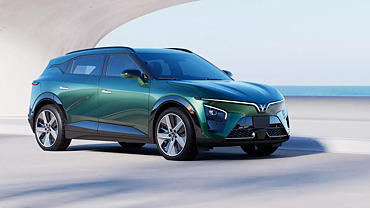
Lexus has showcased the hybrid version of the LS 500 at the ongoing 2017 Geneva Auto Show. The newly unveiled vehicle, named the LS 500h comes with a Lexus Multi Stage Hybrid System which was last seen in the LC 500h. The new hybrid version is built on the new Lexus Global Architecture?Luxury (GA-L) platform, which ensures a low centre of gravity and optimum weight distribution, contributing to the car's essential stability and handling agility, which in turn deliver increased driver rewards.

The newly unveiled hybrid vehicle is powered by a 3.5-litre V6 Dual VVT-i petrol engine with two electric motors that generates 349bhp of power. The vehicle is capable of doing a 0-100 kmph in just about 5.4 seconds. Without using the petrol engine, the LS 500h is capable of running at higher speeds of up to 140 kmph. The LS is equipped with the Lexus Safety System+ along with range of active safety features that covers the risks presented by four of the most common types of accident: rear-end collisions, collisions with pedestrians; accidents caused by lane departure and accidents at intersections. It operates by combining information from omnidirectional sensors around the vehicle, including stereo cameras, monitoring all operating situations from parking maneuvers to collision avoidance.
The LS 500h is powered by a compact, lightweight, lithium-ion hybrid battery. It is 20 per cent smaller than the nickel-metal hydride unit featured in the current Lexus LS 600h, yet has a higher power density. The luggage capacity by 25-litres as compared to the LS 600h. Using lithium-ion technology has also reduced the component's weight, helping reduce the car's overall mass, thus supporting overall fuel economy, emissions performance and handling balance. It is the first Lexus hybrid battery to feature a satellite construction design, in which the cell voltage monitoring function has been made separate from the battery ECU. This allows for efficient use of what would otherwise be empty space inside the battery pack to house the wiring harness and battery cooling blower, thus reducing the unit's overall dimensions. The cooling blower itself has been made more powerful and thinner in size.

































